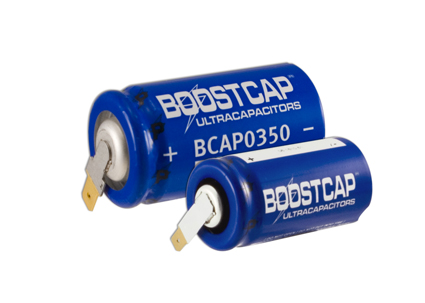
What is a capacitor?
A capacitor is much like a battery, but instead of using a chemical reaction to create a flow of electrons and therefore provide power for an appliance, the capacitor stores electrons.
As such a capacitor is far simpler than a battery, and is used in all sorts of electronics today, to provide a small amount of electricity storage.
What is inside a capacitor?
A basic capacitor consists of two metal plates separated by a non-conducting substance known as a ‘dielectric’. In theory the dielectric substance used can be any non-conducting substance, but in practise specific materials are used such as porcelain or mica to give the capacitor particular features to fulfil its role.
How does a capacitor work?
When a capacitor is in an electric circuit, the electrical source pushes negatively charged electrons on to one of the metal plates. The dielectric substance in the middle prevents the movement of these electrons across the circuit, so this plate becomes highly negatively charged and a positive charge builds on the other plate.
When the repulsive force of the negatively charged plate becomes large enough, it repels further electrons from approaching the plate, and at this point the capacitor is charged. The capacitor can then discharged, which involves allowing the electrons to complete the circuit, providing electricity that can be used for anything.
Using capacitors in commercial scale processes
Capacitors are most commonly used in many everyday electric circuits and appliances, for example in mobile phones where they help maintain the power supply while the main battery is dead to prevent losing information stored in the memory.
Recent advances in capacitor technology have lead to super capacitors that may have the potential to store energy on a commercial scale.
These super capacitors do not have the conventional dielectric separating the two plates; instead they consist of two plates made up of a sponge like substance known as activated carbon. These plates are separated by a nanometer thick separator and then are immersed in a liquid electrolyte where a current is applied to them. Electrons then build up on the negatively charged plate (as per a traditional capacitor), but as there are free positive ions in the electrolyte solution, a layer of positive ions builds next to this negatively charge plate.
The same occurs at the positive plate, where free negative ions are attracted to this plate and build up around the positive charge. Therefore in an super capacitor each carbon electrode ends up having two layers of charge coating its surface, hence these are sometimes referred to as double layered capacitors.
As the super capacitor is discharged, the negative charge on the plate weakens, which releases the positive ions back into the electrolyte solution and the same happens at the positively charge plate, allowing it to be recharged once again.
How do you make super capacitors hold enough charge for commercial uses?
The capacitance, measured in Farads, is how much electric energy a capacitor will hold given a certain voltage and is based on a few factors which are described below.
- The surface area of the plate coating. In super capacitors the coating they use on the plates is activated carbon, this has an incredibly large surface area, helping to maximise the number of electrons that it can hold. Graphene is now being also being used in supercapacitors; it is made from pure carbon, with atoms arranged in a regular hexagonal pattern but the sheets are only one atom thick. One gram of Graphene has a 1520m2 surface area, so this characteristic obviously helps the super capacitor to hold an incredible amount of charge.
- The voltage the capacitor can handle. The higher the voltage the capacitor can handle, the more charge it can hold, so it is key to pick a material that can handle very high voltages.
- The distance by which the two plates are separated. The size of the electrical field generated within the capacitor is inversely proportional to the separation distance. I.e. the smaller the distance the larger the electrical field, hence in supercapacitors the space between the two plates is nanometers thick.
The future of super capacitors
Tesla Motors chief executive Elon Musk has recently come out and said that he believes super capacitors will supercede batteries in the not too distant future. They can be charged in a matter of seconds, and discharged and recharged millions of times without any degradation in performance.
Compared to old style capacitors, a super capacitor has the potential to store about 1500x the amount of electricity, but only about 5% that of a lithium ion battery. However, the ability to release the power is useful, for example if a particular job requires a very short, strong burst of energy, using a capacitor would be better than using a battery.
The hope is that in the coming years, capacitors will become comparable to batteries, so they can hold more charge. Imagine for example, the ability to charge your mobile phone in seconds.
For long-term commercial energy storage, capacitors are still someway off, although even now they can provide a mechanism for dealing with spikes in demand across the grid.












Hello — Looking forsupplier of supercapacitors to assist existing 48 volt battery supply on my electric vehicle.
Maxwell quotes are over £1000.00 for 83 0r 165 farad versions.Any other suppliers please?
Reply to email address below or message on 01271 343377
Many thanks, CHRIS J VERNEY — See barsol.co.uk